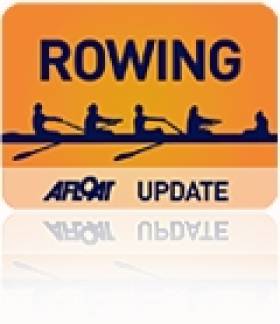Displaying items by tag: Olympic qualification
2023 Olympic Qualification Allianz Sailing World Championships Notice of Race is Published
World Sailing has published the Notice of Race for the 2023 Allianz Sailing World Championships, The Hague, in the port of Scheveningen from 10-20 August 2023.
Included within the Notice of Race are details on the rules, regulations, entry and qualification guidelines, format, scoring, schedule, venue and courses.
The 2023 Allianz Sailing World Championships will bring together 1,400 of the world’s best sailors who will compete in all 10 Olympic events just one year out from the Paris 2024 Olympic Games with the World Championship and Olympic qualification on the line.
This will also be the first edition to include Para World Sailing events with the Hansa 303, 2.4mR and RS Venture classes all featured.
Entry forms must be submitted through the Member National Authorities (MNAs) and can be accessed via each appointed Team Leader.
The 2023 Allianz Sailing World Championships, The Hague, is organised by World Sailing, the Koninklijk Nederlands Watersport Verbond, the municipality of The Hague and TIG Sports, and sponsored by Allianz and Hempel.
View and download the Notice of Race here.
Puspure So Close To Olympic Qualification at Aiguebelette
#Rowing: Sanita Puspure came up just short of gaining Olympic qualification for the Ireland single scull in a tight finish of the B Final at the World Championships in Aiguebelette in France this morning. The Old Collegians woman carved out an impressive lead of just over a length after 500 metres and held it until the final quarter. Just three from this race would qualify boats for Rio, and the field caught Puspure coming up to the finish. On the line, Puspure took fifth, .66 of a second behind third-placed Magdalena Lobnig of Austria.
World Rowing Championships, Aiguebelette, France – Day Eight (Irish interest)
Men
Lightweight Four - B Final (Places 7 to 12): 3 Britain (2 P Chambers) 5:56.29.
Single Sculls – B Final (Places 7 to 12): 2 Britain (A Campbell) 6:46.68
Women
Single Sculls – B Final (Places 7 to 12): 1 Sweden 7:26.60, 2 Lithuania 7:27.30, 3 Austria 7:27.52; 4 Belarus 7:27.86, 5 Ireland (S Puspure) 7:28.18, 6 Zimbabwe 7:31.74.
Two Ireland Boats Qualify for Olympic Games
#Rowing: Ireland qualified two boats for the Olympic Games at the World Rowing Championships in Aigubebelette in France. The lightweight men’s and women’s doubles had to finish in the top 11 to qualify, which meant a place in the top five of their B Finals.
The lightweight men’s crew of Paul and Gary O’Donovan took the final place. In a tense race, where the boats were tightly packed for much of the 2,000 metres, the O’Donovan’s sprinted to the line taking fifth just ahead of Greece – the margin was .28 of a second.
In the women’s race which followed, Ireland’s Sinead Jennings and Claire Lambe carved out a clear lead in the second quarter and held it until the pack caught them coming towards the line. However, the Irish were determined not to miss their chance, and took third behind China and Poland. This placed them ninth in the world.
World Rowing Championships, Aiguebelette, France – Day Seven (Irish interest)
Men
Lightweight Double Sculls – B Final (Places 7 to 12): 1 Poland 6:20.25, 2 United States 6:20.55, 3 Austria 6:22.04, 4 Switzerland 6:22.34, 5 Ireland (P O’Donovan, G O’Donovan) 6:23.20; 6 Greece 6:23.48.
Women
Lightweight Double Sculls – B Final (Places 7 to 12): 1 China 6:59.31, 2 Poland 7:00.37, 3 Ireland (C Lambe, S Jennings) 7:00.67, 4 Russia 7:00.79, 5 United States 7:02.21; 6 Sweden 7:02.45.






























































